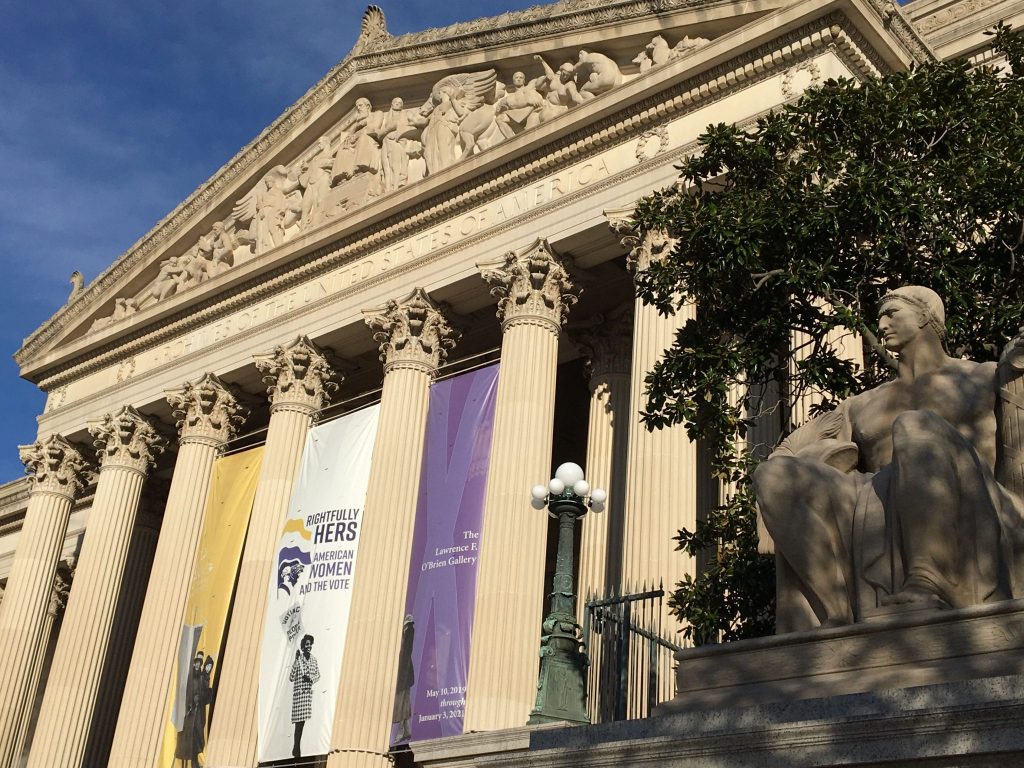
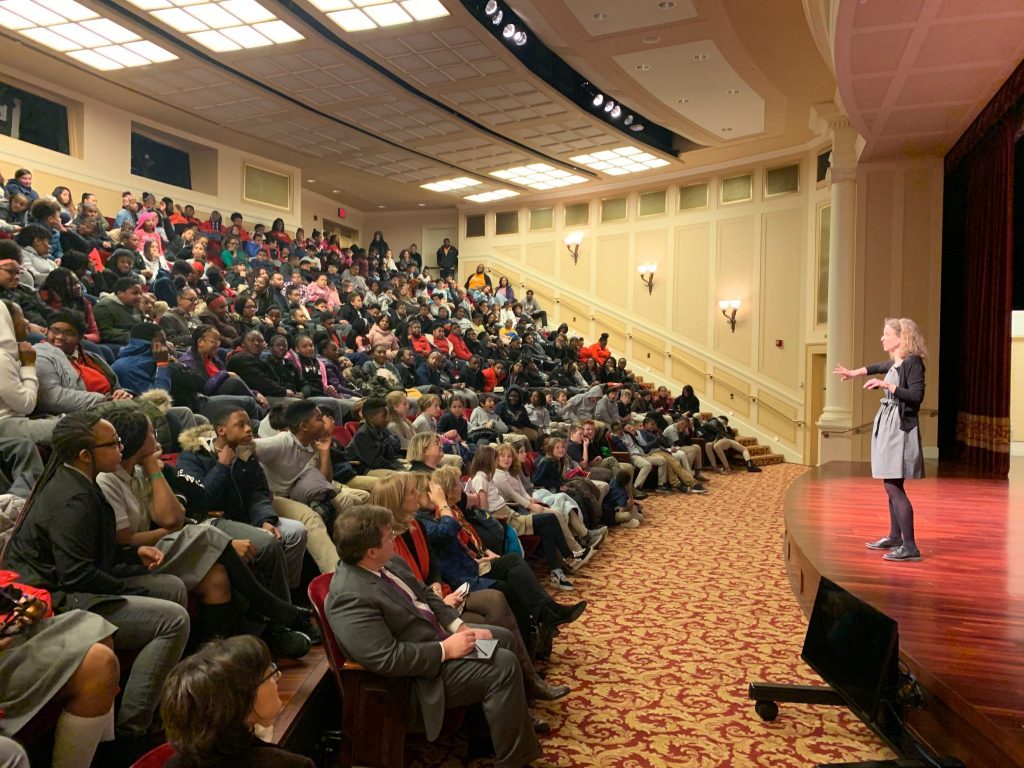
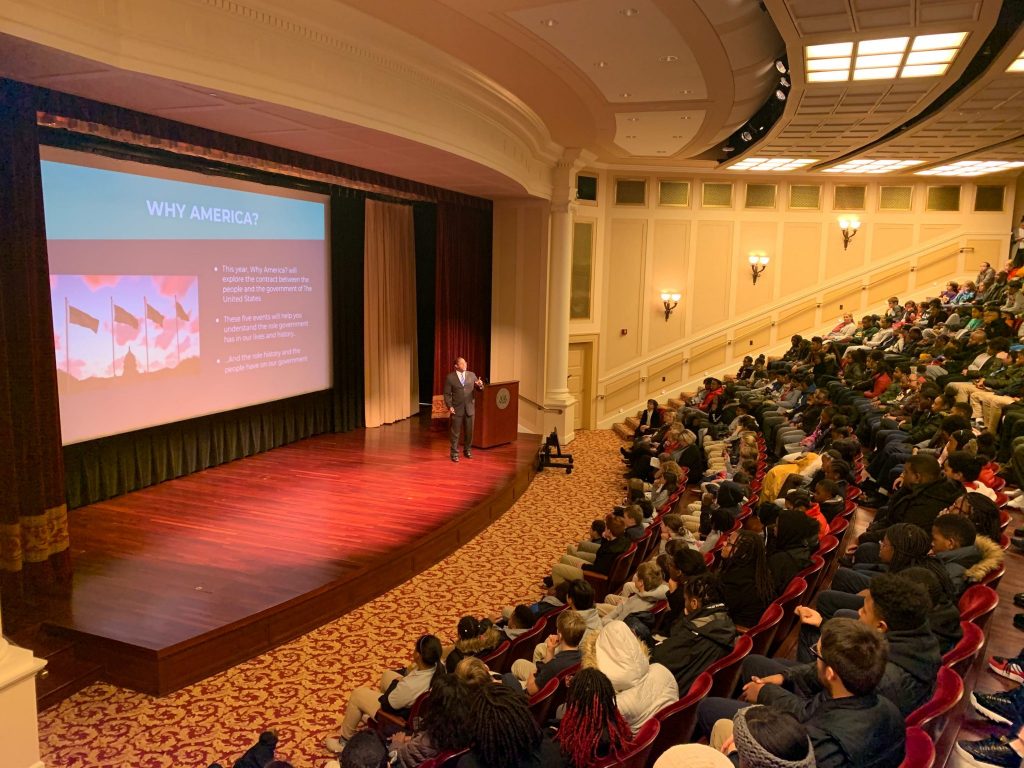
Students learn about the Constitution as a contract between the new government and the American people, why it was instituted, and how it works. They are introduced to the drafting and ratification process of the Constitution, including why the Articles of Confederation were not sufficient to hold together the new United States of America and why a new contract was necessary. In our December 2019 event on this topic with local students at the National Archives, students got to “meet” James Madison and tour the National Archives Museum.
WATCH:
INTRODUCTION
Overview of the Declaration, Constitution, and Bill of Rights
Explore the Declaration of Independence, U.S. Constitution, and Bill of Rights.
Who was James Madison?
Learn about James Madison and his influence on the founding American documents
ABOUT THE DECLARATION OF INDEPENDENCE
Explore the colonists reasons for separating from Great Britain.
Images of the Declaration of Independence
Declaration Mural, National Archives
ABOUT THE CONSTITUTION
Constitution Mural, National Archives
Explanation of the Articles of the Constitution
Issues with the Articles of Confederation
Understand why there was a need for a Constitution and why the first government was not working
We the People, Focusing on details: Compare and Contrast
Examine the original and final drafts of the Constitution and evaluate the significance of the selection of the words “We the People.”
Constitutional Convention
Explore the debates and compromises of the Constitutional Convention
The Constitution at Work
Explore other documents and their connections to the Constitution
BILL OF RIGHTS
Understand how and why the first ten amendments of the Constitution were decided.
Discuss specific amendments in action
ADDITIONAL ONLINE RESOURCES
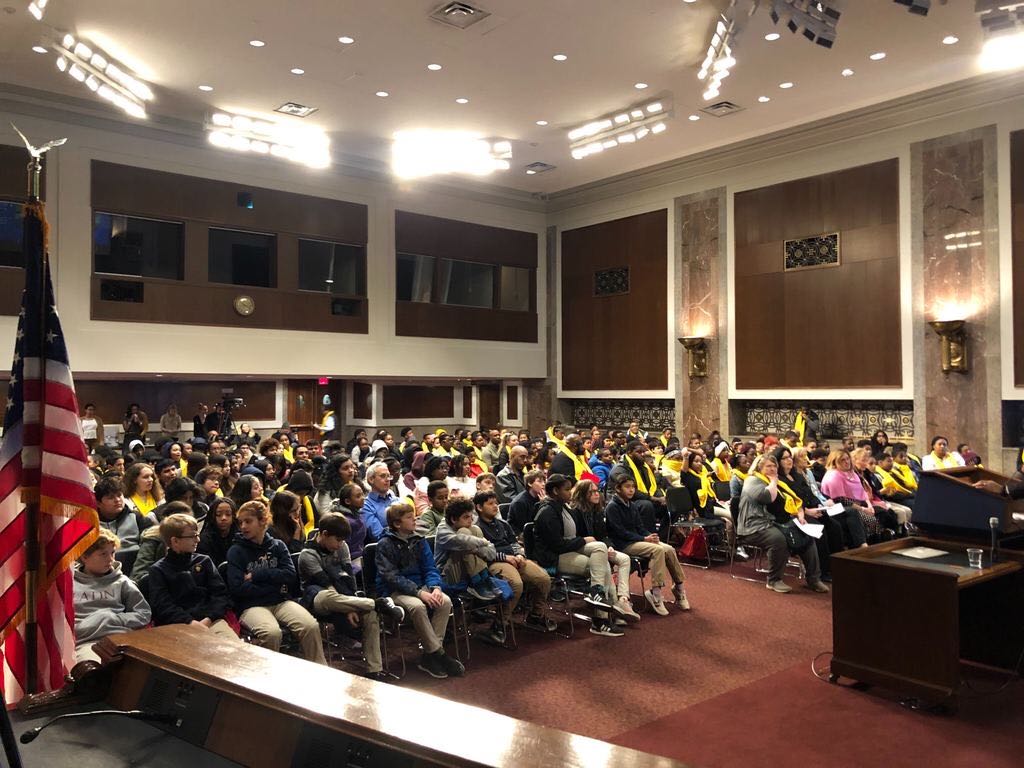
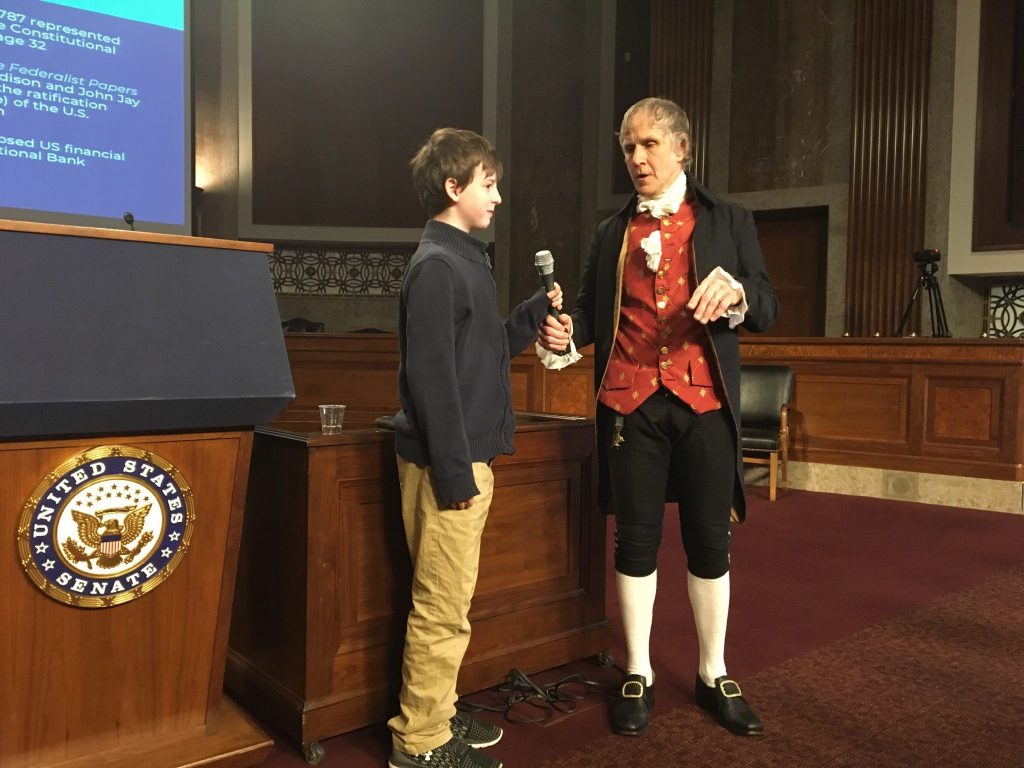
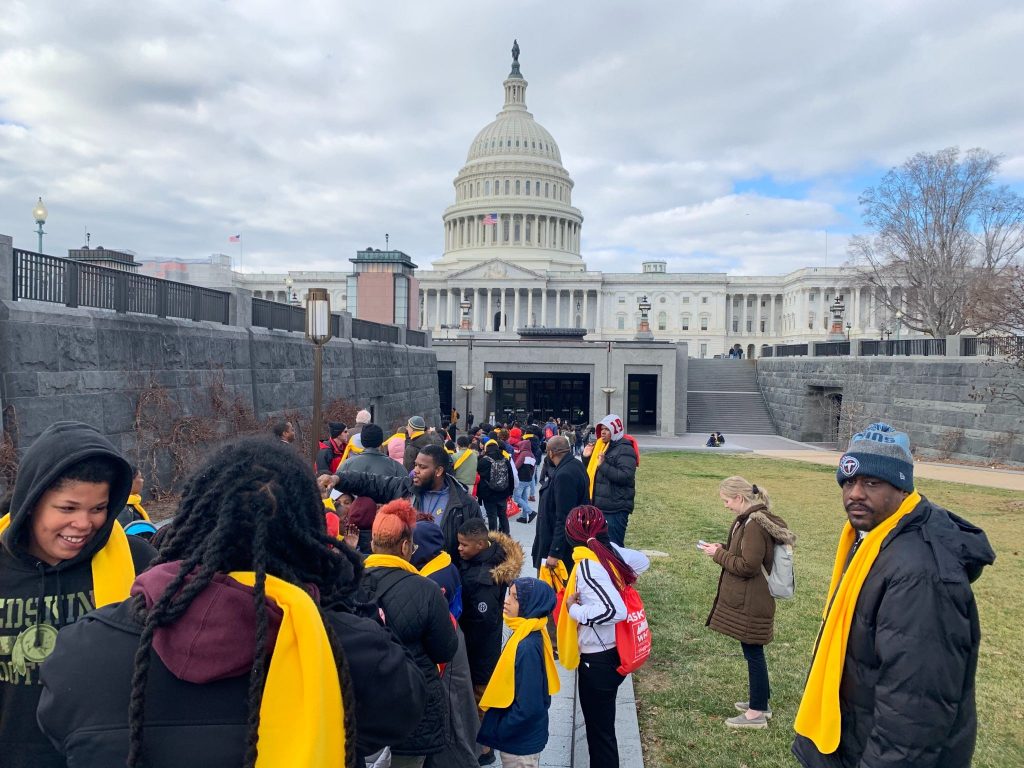
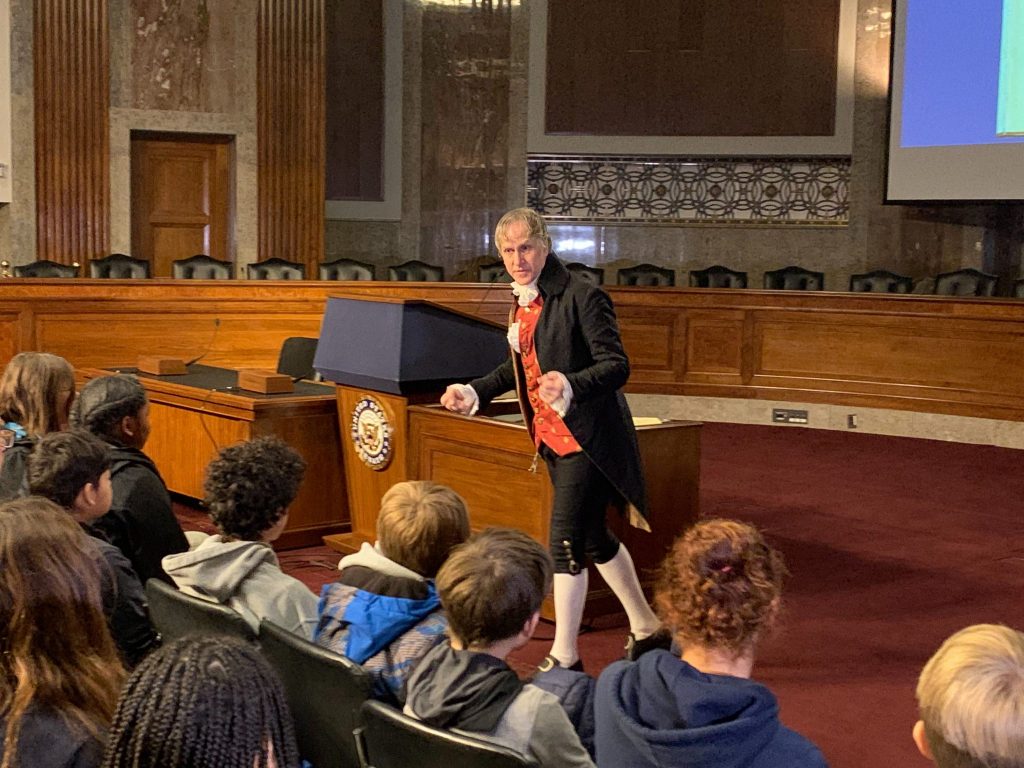
Students explore the Treasury and America’s financial system, as well as additional material about the legislative branch. Through these resources, students learn how the new contract, the Constitution, was intended to function, and how the Founders envisioned that we would pay for it. Alexander Hamilton factored in strongly in that discussion; at the Washington, DC event in January 2020 with students from the area, Mr. Hamilton was present to help students explore how America functions. They also learned about the role of Congress and had an opportunity to tour the US Capitol. You can do it too from anywhere in the world!
WATCH:
THE CONSTITUTION & CONGRESS
Explanation of Article I of the Constitution
Explore Article I
HAMILTON’S VISION
Learn about Alexander Hamilton
Explore Hamilton’s Biography
Learn about Hamilton’s role creating the National Bank
LESSON: Alexander Hamilton and his vision for the US Financial System
ONLINE RESOURCES:
Hamilton Video
Why Hamilton Supported a National Bank
US Banking System
What is the Legislative Branch?
What is the Legislature? (video)
What is Congress? (6th-8th grade)
Alexander Hamilton for kids
The Federalist Papers for kids
The United States Congress for kids
Visiting the U.S. Capitol lesson plan
Schoolhouse Rock: I’m Just a Bill
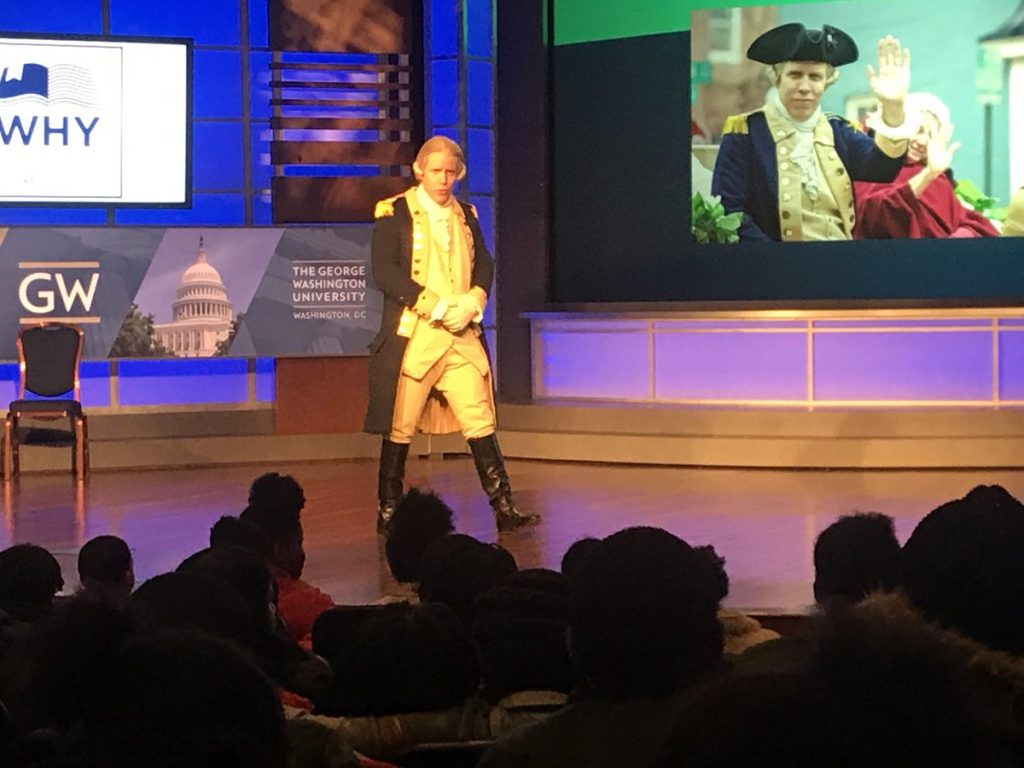
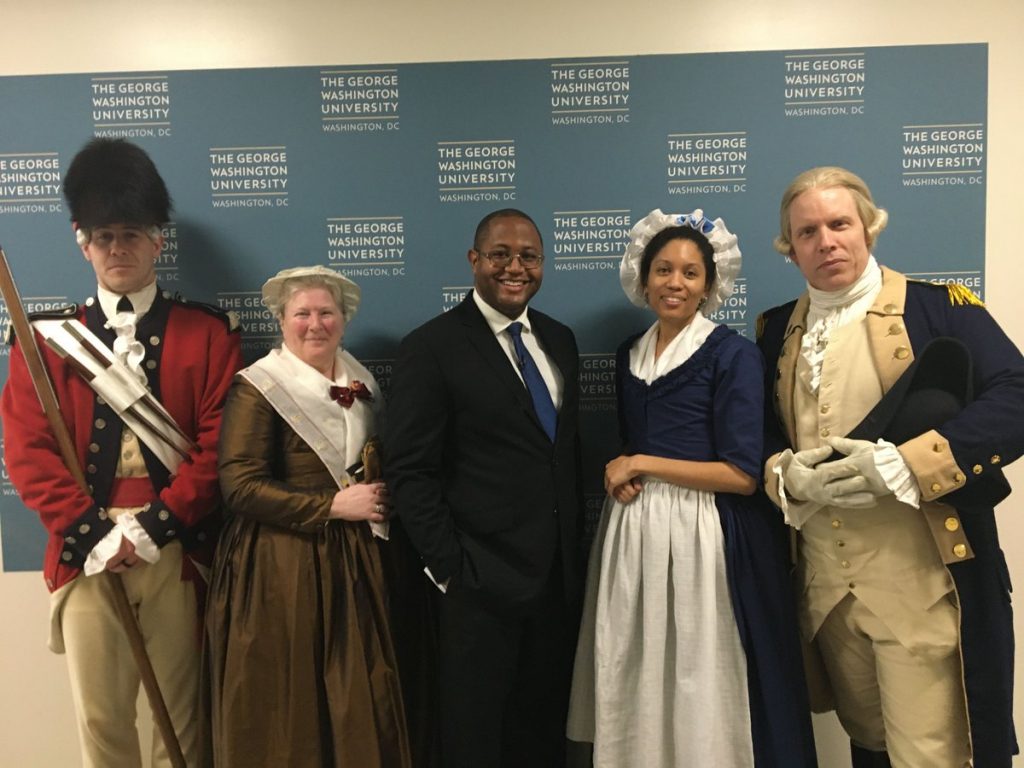
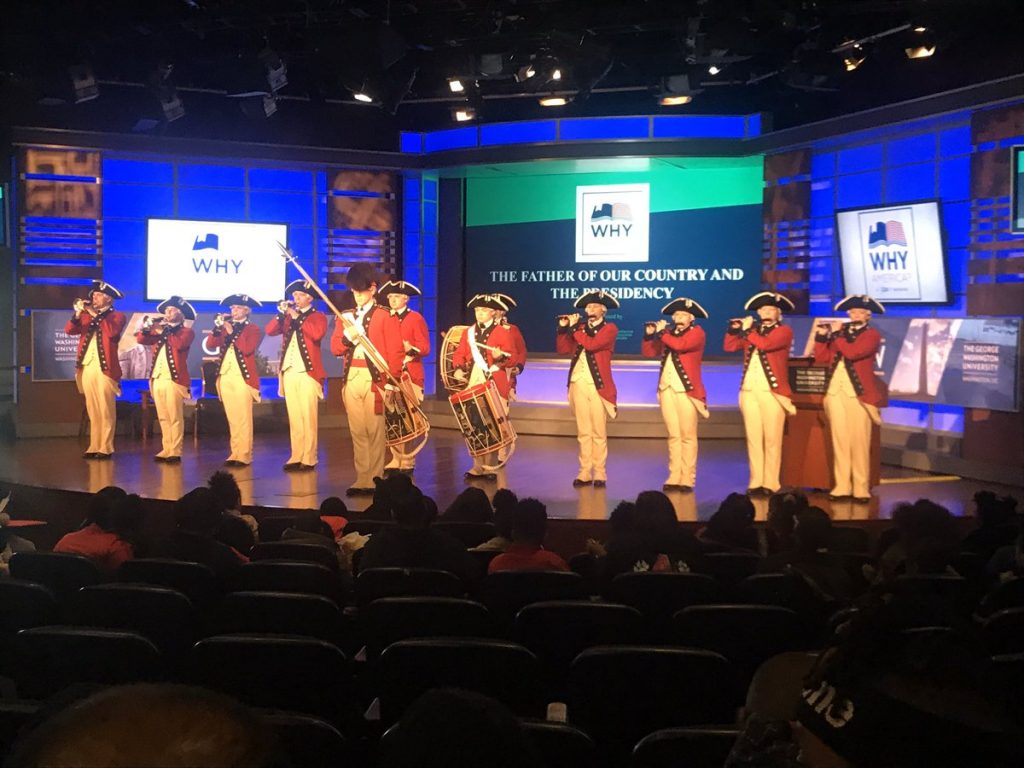
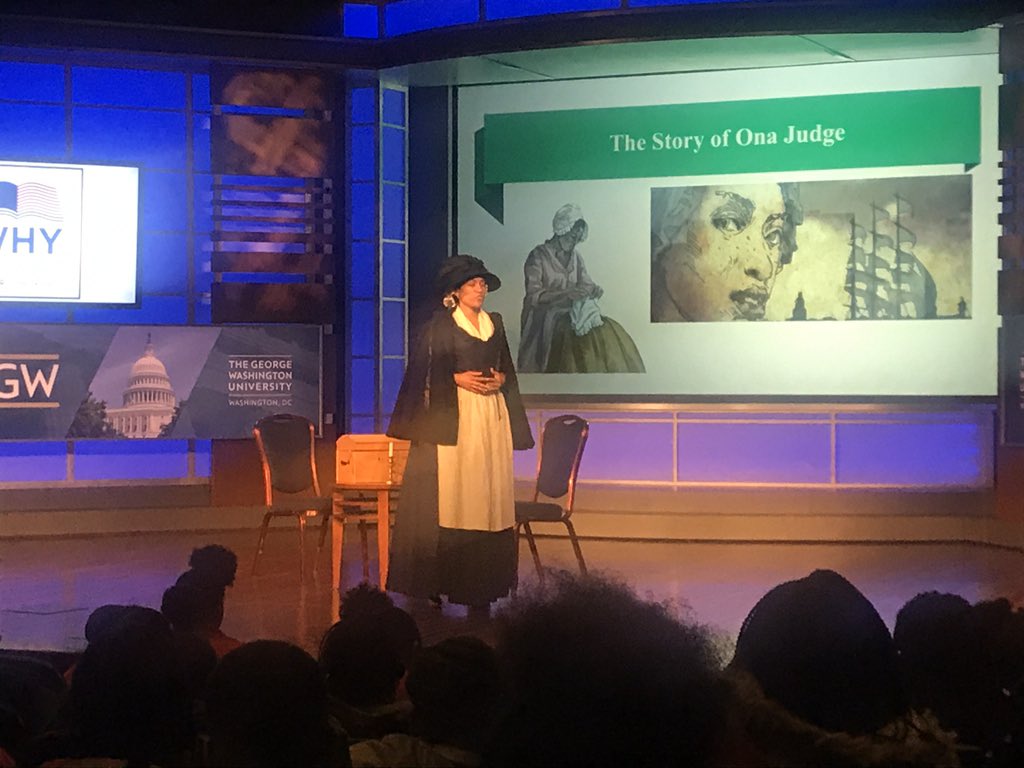
Students learn about how the executive branch of the American Government functions according to the decisions made by the Congress on who should execute the constitution. This lesson also looks at the story of Ona Judge, a Washington Family slave who escaped captivity, to introduce students to Washington’s less glamorous legacy as a slaveholder. At our Washington, D.C. event on this topic in March 2020, students met with historical interpreters representing George Washington, his friends and the enslaved people who were instrumental to the nation’s early success.
STUDENT AND TEACHER RESOURCES:
Use the following lesson plans and activities to guide your students through this module.
George Washington and the Presidency
Learn about George Washington’s life
George Washington’s Farewell Address
Read Washington’s Farewell Address
Explore the historical significance of Washington’s Farewell Address
The Constitution and the Presidency
Learn about Article 2 of the Constitution
George Washington and Establishing the Presidency
Explore establishing the presidency and the principles of democracy
ONLINE RESOURCES
George Washington Introductory Video
Washington: History Channel Miniseries
Ten Facts about Washington and Slavery
Ona Judge, Escaped Slave
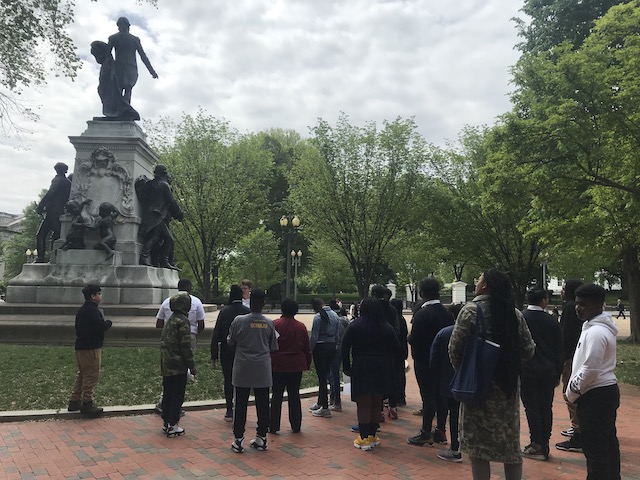
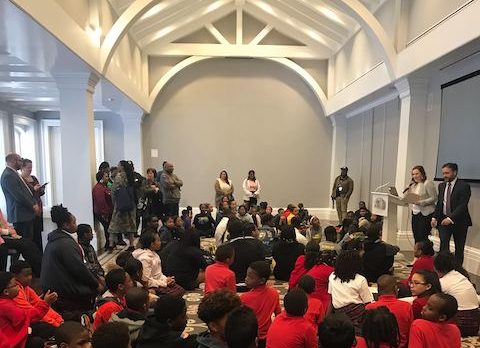
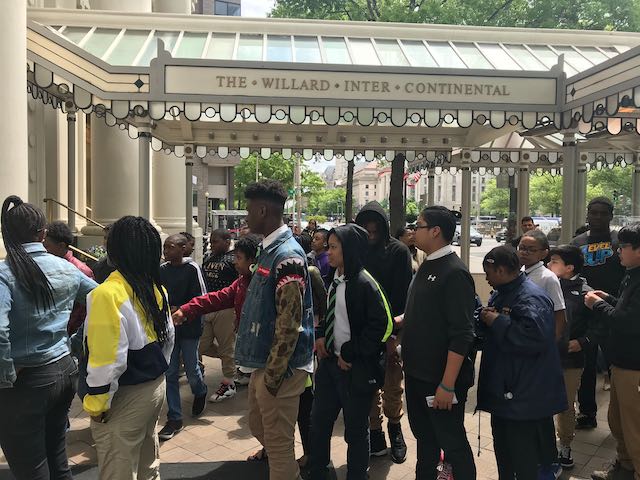

Students will learn about the rights and responsibilities of citizenship, their first amendment rights, and the movements in our history to ensure that every man and woman of every ethnicity have the right to vote and have their voices heard. Resources from the White House Historical Association provide a history of Lafayette Square and the White House.
STUDENT AND TEACHER RESOURCES:
Use the following lesson plans and activities to guide your students through this module.
The First Amendment
Lesson Plan: The First Amendment (4th-5th Grade)
Lesson Plan: The First Amendment (6th-8th Grade)
Study the painting “Freedom of Speech” by Norman Rockwell
Read the text of the First Amendment
Read an explanation of the First Amendment
Women’s Suffrage
Lesson Plan: Women’s Suffrage (4th-5th Grade)
Lesson Plan: Women’s Suffrage (6th-8th Grade)
Watch a history of the 19th Amendment
Read about Gender Differences in Voter Turnout
Watch a history of the Women’s Suffrage Parade
The Abolitionist Movement
Lesson Plan: Abolitionist Movement (4th-5th Grade)
Lesson Plan: Abolitionist Movement (6th-8th Grade)
Witness the life and courage of Harriet Tubman
Watch the story of Frederick Douglass and the Abolitionist movement
Additional Online Resources:
Women’s Suffrage: A Movement in the Right Direction (Infographic)
Movement & Action: The Women’s Suffrage Movement
Women’s Suffrage Facts for Kids
Civics (History and Government) Questions for the Naturalization Test
The White House Classroom Resource Packets: History of the White House and its residents
The President’s Neighborhood: History of the parks and buildings near The White House
Picketing the White House: The suffragist movement during World War I
Protest at the White House: Review of protests over the years at Lafayette Park
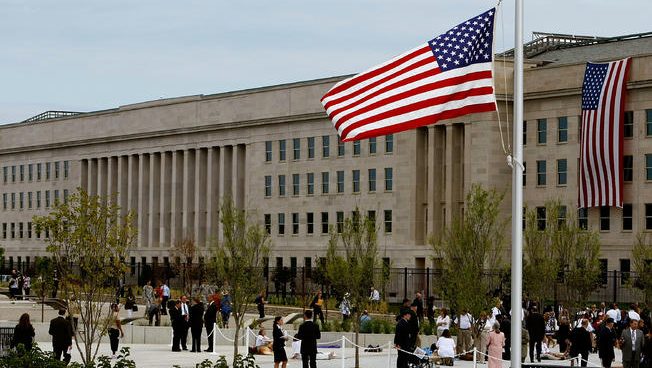
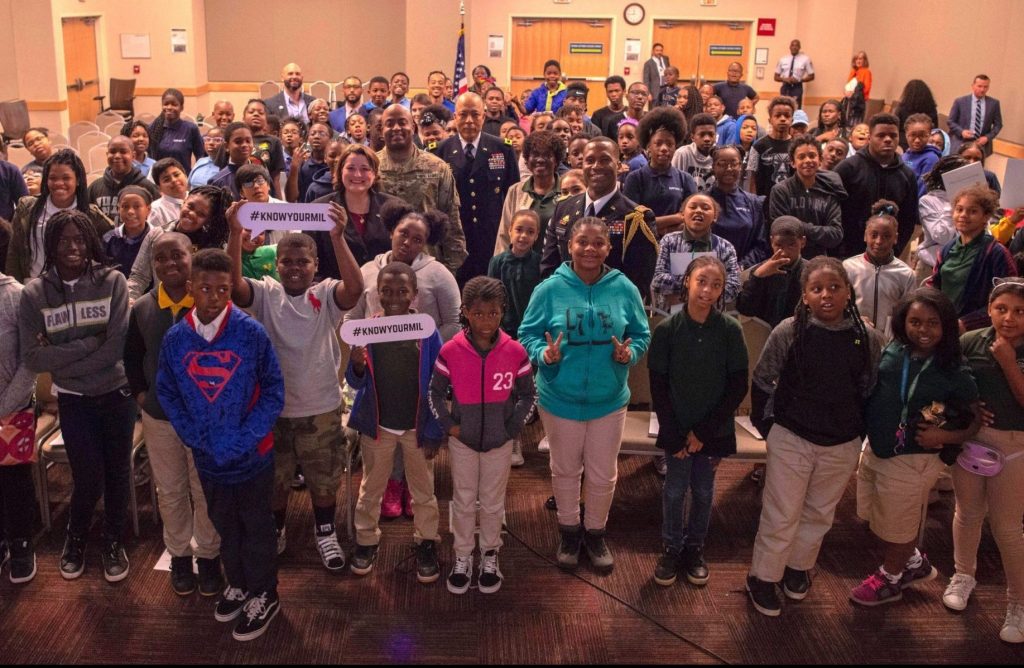
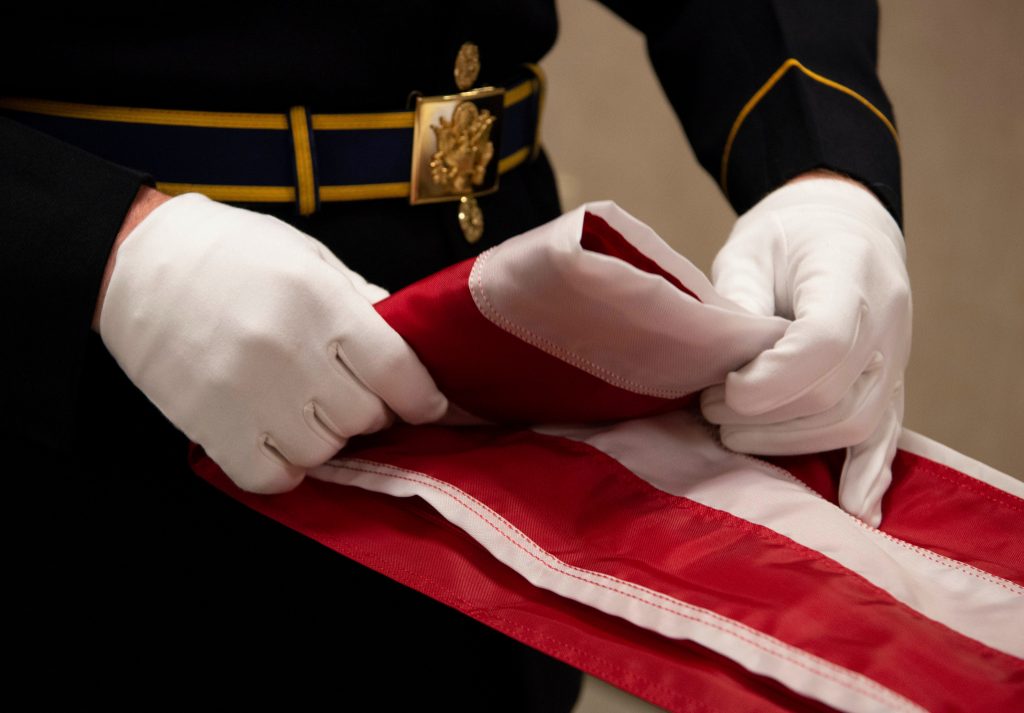
This lesson teaches students about the military, who protects the contract between government and the people, and the meaning of Flag Day and Memorial Day in celebrating and honoring our nation’s armed forces and symbols.
STUDENT AND TEACHER RESOURCES:
Use the following lesson plans and activities to guide your students through this module.
The First Amendment
Lesson Plan: The First Amendment (4th-5th Grade)
Lesson Plan: The First Amendment (6th-8th Grade)
Study the painting “Freedom of Speech” by Norman Rockwell
Read the text of the First Amendment
Read an explanation of the First Amendment
Women’s Suffrage
Lesson Plan: Women’s Suffrage (4th-5th Grade)
Lesson Plan: Women’s Suffrage (6th-8th Grade)
Watch a history of the 19th Amendment
Read about Gender Differences in Voter Turnout
Watch a history of the Women’s Suffrage Parade
The Abolitionist Movement
Lesson Plan: Abolitionist Movement (4th-5th Grade)
Lesson Plan: Abolitionist Movement (6th-8th Grade)
Witness the life and courage of Harriet Tubman
Watch the story of Frederick Douglass and the Abolitionist movement
Additional Online Resources:
Women’s Suffrage: A Movement in the Right Direction (Infographic)
Movement & Action: The Women’s Suffrage Movement
Women’s Suffrage Facts for Kids
Civics (History and Government) Questions for the Naturalization Test
The White House Classroom Resource Packets: History of the White House and its residents
The President’s Neighborhood: History of the parks and buildings near The White House
Picketing the White House: The suffragist movement during World War I
Protest at the White House: Review of protests over the years at Lafayette Park
Why America? is a service of The Center for Education Reform.
© Copyright 2025. All Rights Reserved